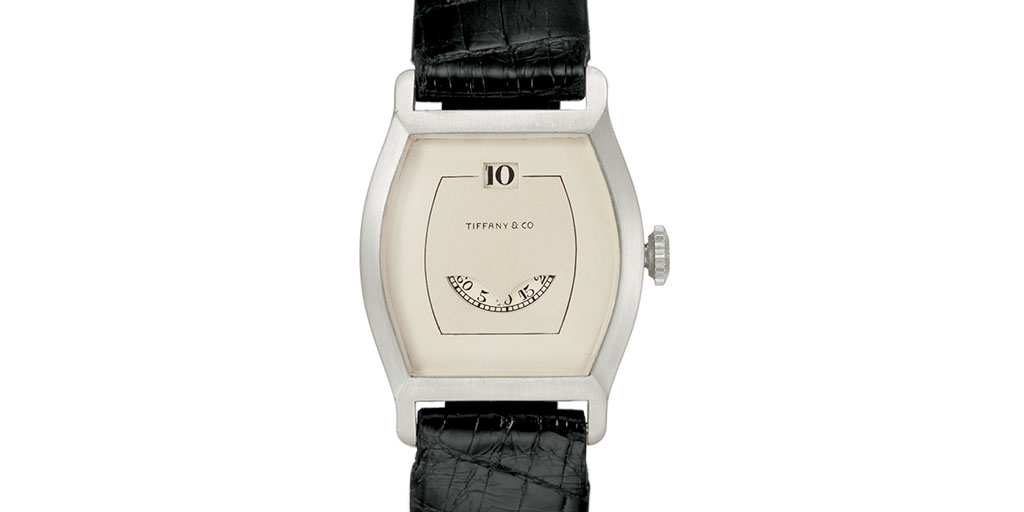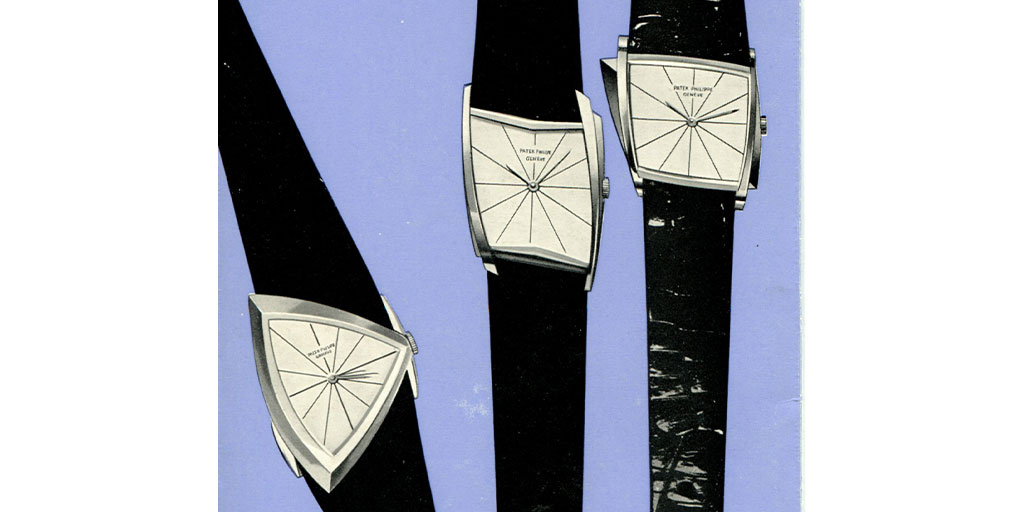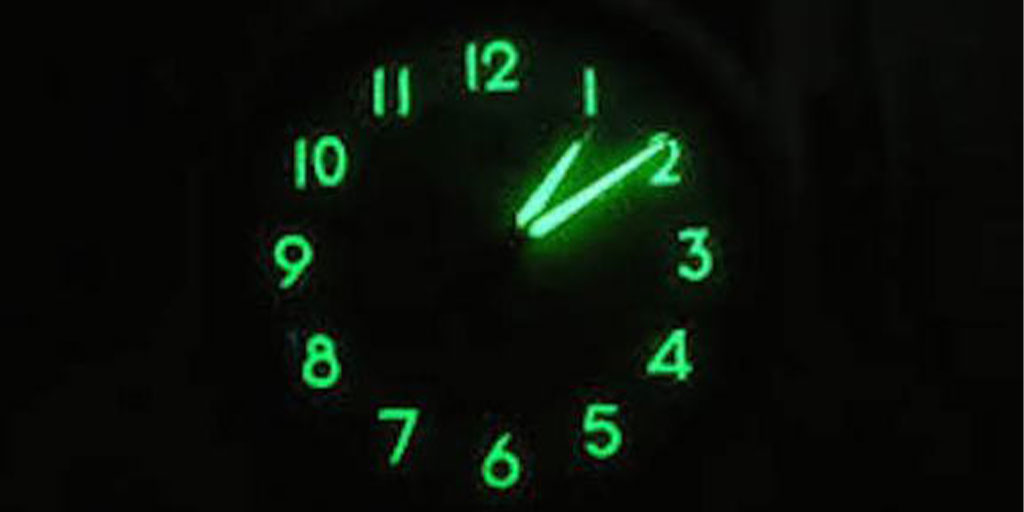Patek Philippe is known for a myriad of both time only and complicated wristwatches. And while one could dedicate a lifetime exploring time only vs complicated wristwatches, the jump hour wristwatch provides a unique opportunity to examine both. Yet, the jump hour seems to be one of the most under discussed, and perhaps under appreciated complications. These timepieces harmoniously blend imaginative, yet sobering design which makes us read time in a different way. Today, these timepieces are extremely rare as production was limited and sporadic by Patek Philippe and very few examples have reappeared on the market.

About the Jump Hour
A jump hour only has one hand or an aperture which indicates minutes. The hour ‘hand’ is displayed in a single aperture which ‘jumps’ to the next hour every 60 minutes. The question often asked is whether jump hour wristwatches are classified as time only or complicated? (To avoid any confusion, we will draw a distinction from the “jumping hours” complications associated with travel and dual time zone complications). According to Foundation Haute Horlogerie (FHH), the definition of a complication is: “Any function other than the indication of hours, minutes and seconds, regardless of whether the mechanism is hand-wound or self-winding, mechanical or electronic, and of movement height.” Upon reading the answer from FHH, one would assume the jump hour to be a time only mechanism as these timepieces do not display information beyond hours, minutes and/or seconds. However, several experts assert that the jump hour is a complication by design. The expression of time is interrupted from the more traditional analog form via a rotating disc in substitution of the hour hand. Part of the complexity of a jump hour movement is the regulation of power transferred to the hour disc. Unlike a traditional time display which uses a constant force, the ‘jump’ of the hour indication only needs a delivery power for a short period when the mechanism engages. This sudden surge of power can cause the amplitude of the balance to vary. Even if the display of numerals looks relatively simple, especially when minutes are shown in a digital aperture, the mechanism is sophisticated, often patented after extensive research and innovation.

This intriguing use of the hour displayed via an aperture originated in pocket watches in the 19th century (although windows displaying numerals had existed since the early 18th century when they were used for calendars or astronomical purposes). For people such as watchmakers and military personnel who require a precise reading of the time, the clear indication of the minutes on the outer dial, or aperture of a jump hour provided a useful presentation.
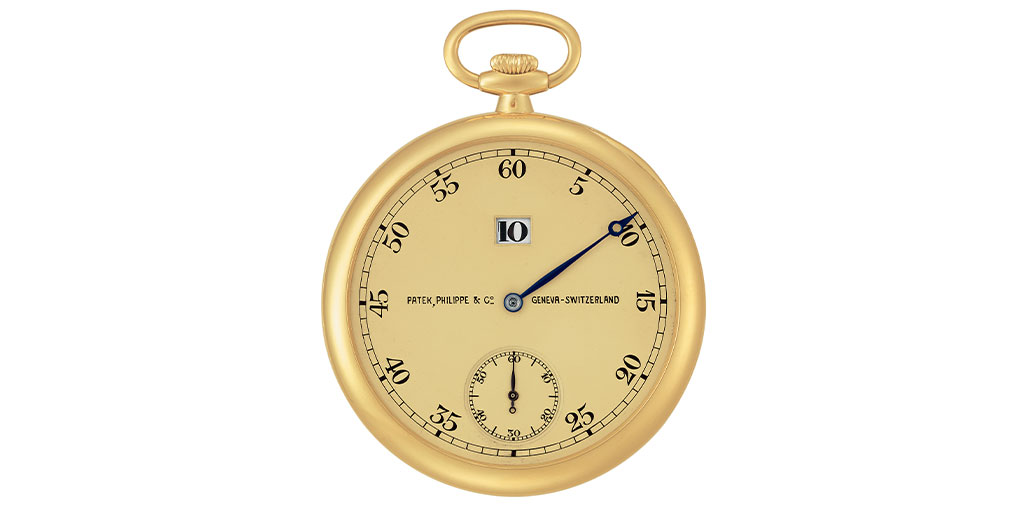
The Origin of the Patek Philippe Jump Hour Wristwatch
As the wristwatch became accepted, styles oriented for the jacket pocket would gradually make their way to the cuff. The jump hour was no exception. The Roaring Twenties was an experimental phase for wristwatch design and the jump hour first appeared. It then disappeared in the later part of the 1930s, perhaps as a result of growing trends towards round case shapes and/or higher complications for the wearer’s wrist.
Early jump hour wristwatches are extremely rare and it is generally believed that Patek produced less than twelve during the 1920s and 30s with only seven known to the public. The production timeline for these wristwatches consists of three distinct periods: the most diverse being in the late 1920s and early 1930s, followed by a lengthy absence of the complication until two examples return in 1989, and finally the most recent example born in 2014.

One of the earliest known Patek Philippe jump hour wristwatches was made in 1927. An example of this timepiece (seen above) is the only publicly known rectangular tortue-shaped jump hour from the company. The movement is a Cal. 10”’ ebauche by LeCoultre modified to incorporate the jump hour. This modification came by the hand of Louis-Elissée Piguet of the renowned family of complications specialists from the Valle de Joux. The case back features the inscription “Presented to T.H. Gillespie by Employees of Standard Steel Car Co., May 1, 1903 – May 1, 1930”. The watch width measures 26mm and is 39mm long, making it extremely large for the era. It is likely that a watch of this size was personally requested by the Pennsylvanian retailer. In addition to the engraved case back, both Patek Philippe & Co. and the retailer, Grogan Co. are engraved on the movement. Interestingly, the same year this watch was sold, a highly important single button left handed split seconds chronograph also left the Pittsburgh retailer’s sales floor.

While Grogan Company may not hold the same level of prestige as the name Cartier or Tiffany, discerning enthusiasts recognize the name as one of the prestigious American retailers of the era. The timepiece was first brought to the market on February 21st, 2001 at Sotheby’s New York fetching a total of $302,750. It would go on to trade hands one more time in Christie’s Geneva in November of 2009 for $358,190.
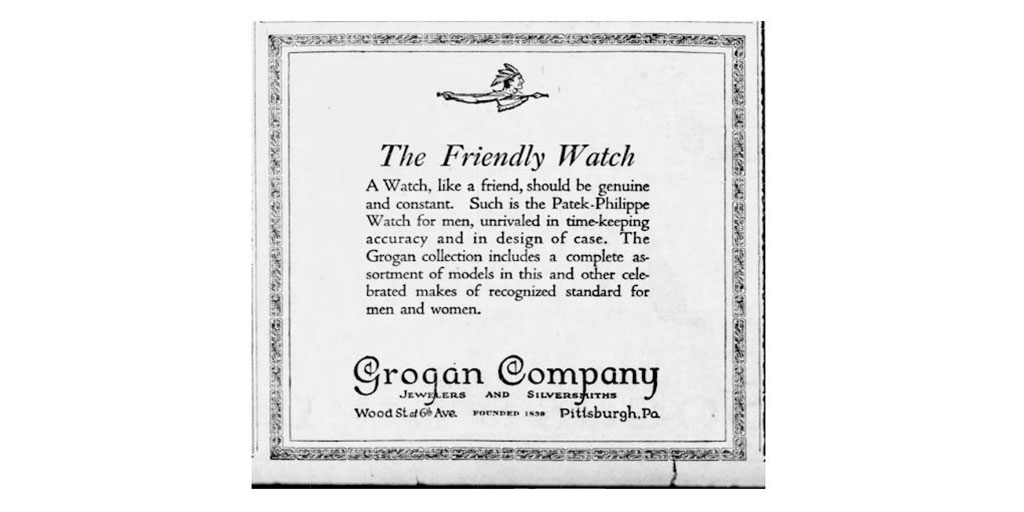
Patek Philippe was one of the few brands that also combined digital and jump hour styles within their wristwatches during the 1920’s. To clarify, the term “digital” in this sense is referring to the expression in which the time is read, and not the more commonly used term associated with electronic watches. A digital watch is read in a non-analog fashion, whether it be vertical or linear. While Audemars Piguet is recognized for introducing the style to the market, Patek Philippe introduced their interpretation of this timepiece years before it was an accepted design by neighboring watchmakers throughout Switzerland during the 1930s. The early digital wristwatches of the 1920s and 1930s would typically have two to three apertures indicating the hour, minutes and in some cases seconds. The design has been described as a more austere timepiece that was fitting with the Great Depression. However, wearing a digital watch during the 1920s through 1930s would have been quite avant garde and people such as the Maharajah of Patiala and Duke Ellington wore these watches. (Albeit theirs were from Cartier, yet Duke would later have the good senses to choose a Patek Philippe chronograph). During the 1930s, these watches became more popular, often featured in ads emphasizing the tough nature of the watch. Some other manufacturers even went as far as describing these fashionable watches as “an armored watch” being strong enough that “a car could drive over it. For a period, they were advertised for aviators in the United Kingdom.
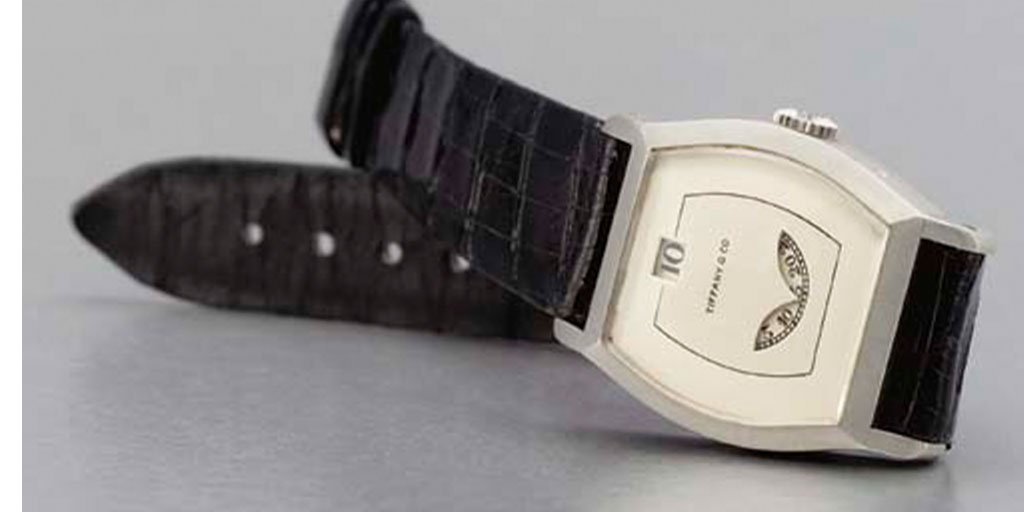
The only jump hour wristwatch by Patek Philippe believed to feature a retailer’s signature on the dial was sold by Tiffany & Co in 1930. Tiffany & Co. remains the longest established American retailer for Patek Philippe, with their distribution agreement beginning in 1851. For Patek Philippe collectors of any genre, some of the most sought-after timepieces feature retailer signed dials. The above watch is thought to be one of only two digital Patek wristwatches to exist (the second being known through an archive photo from circa 1929 within the books ‘Wristwatches: History of a Century’s Development’ and ‘Patek Philippe Genève – Wristwatches’.
Both of these digital wristwatches feature the cushion tortue case, which was a case shape that often featured calendar or repeater complications. The Tiffany-signed watch was sold at Christie’s New York auction Important Pocket Watches and Wristwatches on June 11th of 2004 for $589,900. Coupled with the fact that it is considered to be an early and unique example warrants the highest of provenance. These are the watches that have evaded the public eye, in part because they were sold just before the time of massively shared social media. They only exist in catalogues and in the memories of those lucky enough to be in their presence. However, there is one other example of an early jump hour wristwatch that can be seen by the public at the Patek Philippe Museum.

Despite the daring designs of the early jump hour wristwatches, the style would ultimately be short lived. The current consensus amongst Patek Philippe experts is that there have been a total of seven jump hour wristwatches by Patek Philippe identified publicly: four from archive photos, two from the aforementioned auctions, and the final example within the Patek Philippe Museum.
Return of the Jump Hour
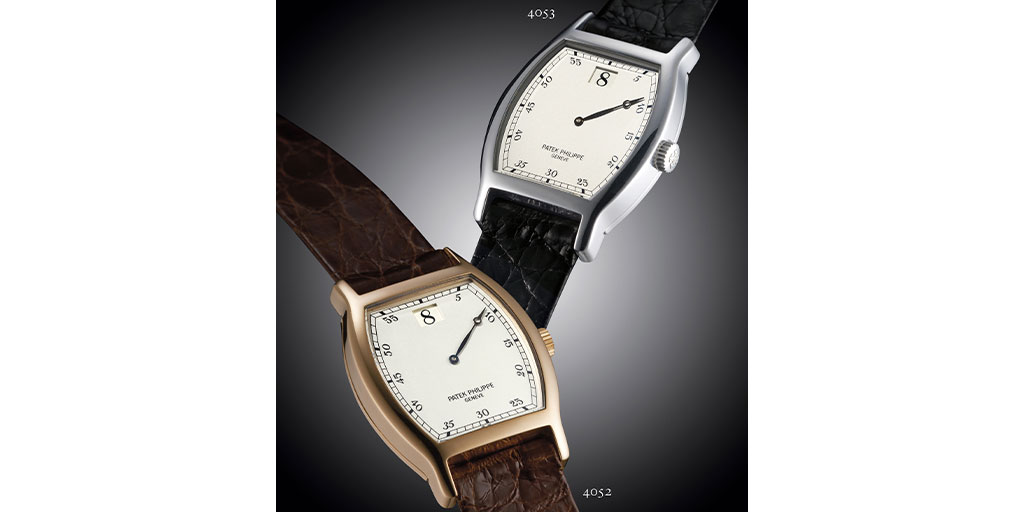
1989 was a monumental year for Patek Philippe, not only in that it marked the 150th year anniversary of the company, but also by the manner in which it celebrated its heritage and continuation. The Art of Patek Philippe by Habsburg, Feldman — a thematic auction combined with a series of limited edition timepieces — would set a precedent for how watch brands could elevate their history in collaboration with an auction house. Thematic auctions would later be utilized by brands such as Cartier, Breguet, Rolex, and Vacheron Constantin. These commemorative auctions and traveling exhibitions would go on to serve future generations by contextualizing the Genevan companies’ past, present, and future. An example of an anniversary limited edition timepiece is found within the ref. 3969. When looking at the tonneau examples from the late 1920s, it is clear that the ref. 3969 pays the sincerest respect to the past. With no known examples of jump hour wristwatches since the Stern family’s 1932 acquisition of the company, this marked the family’s first interpretation of the jump hour. The movement is a manual wind caliber 215 HG (HG denoting the jump hour complication). The origin of the base caliber 215 dates back to 1975 when it was first introduced into the Ellipse model, succeeding the caliber 23-300 (9), and still serves within Patek Philippe’s current production.
With only 450 examples being produced in 18K pink gold, and 50 in platinum, the ref. 3969 offers collectors access to a rare style in Patek Philippe catalog of timepieces. Despite this, the ref. 3969 has not garnered the strongest results at auction in recent years, particularly for the more available rose gold models. Perhaps this has something to do with the fact the jump hour is a bit more of an esoteric part of Patek Philippe’s history. However, they do invite conversation whether it be from friends, fellow watch collectors, or one’s children. After all, we are moving towards a world where the young struggle to read a normal analog display. What better watch to look after for the next generation than a jump hour?
The Complicated Jump Hour

Fast forward 25 years and another important Patek anniversary is celebrated with a jump hour. This time, there is no disputing that this jump hour movement is a complication as it combines one of the greatest complications, the minute repeater. The 175th Anniversary ref. 5275 underwent four years of research and development. Additionally, four new patents were developed in creating the caliber 32-650 HG PS. The hours, minutes and seconds all jump simultaneously. The repeating complication can be set or disengaged to chime upon the top of each hour. This complication is a somewhat subtle acknowledgement to the striking clocks that served to indicate the time within European communities before clock towers visually depicted the time. The Stern family have expressed in great detail the pride they take in creating chiming timepieces, and either Philippe or Thierry Stern will personally listen to the chime of each timepiece before being released for sale. Only 175 pieces in platinum were produced.
The ref. 5275 enters the conversation with a clear deviation from the more toned down and minimalist designs we see. Both the decorative, and mechanical attributes of this timepiece strongly emphasize the brand’s artistic approach to the hand craftsmanship component of watchmaking. The floral motif at first glance may seem atypical from the manufacturer. However, these ornate, hand-engraved decorations have been incorporated in both cases and dials throughout the company’s history. Examples that come to mind are the twin desk clocks of the 1920s, or late 19th Century hunter case pocket watches. More recently we have seen the style within the 50th anniversary Golden Ellipse collection.
The Future
The overall history of jump hour wristwatches remains to be undersold, yet the opportunities to research and promote the timepieces are vast. While the heritage of such Patek Philippe examples are limited, their stories still provoke questions. How many in total were produced? Were these mostly sold to the American market? Who were the clients? Are there more examples that we can anticipate to appear at public auction? In regard to the modern examples, while they are still quite a young collection, the opportunity to reshape our understanding of jump hours is undoubtedly a commitment Patek Philippe has undertaken. In that sense, they seek to create a new tradition.
The 25 year-releases make one contemplate what the next chapter will be for Patek Philippe. The year 2039 will be the companies’ bicentennial, so to predict what complications that will be accommodated within a hypothetical timepiece would be rather ambitious. A bold guess could be a return to the very short-lived digital format. Hopefully we will see the enthusiasm and appreciation of the genre grow. One thing is for certain on the 200th Anniversary releases, we can expect to see the art of watchmaking in the most inspiring form.
Collectability welcomes Charlie Dunne (@books_on_time on Instagram) as a contributing writer.

